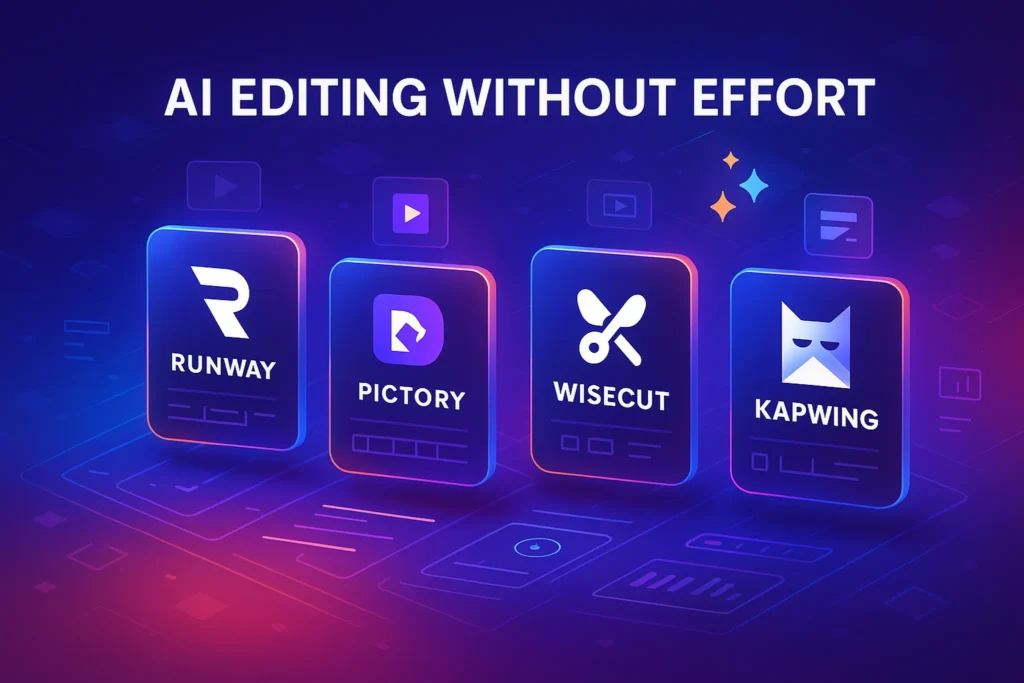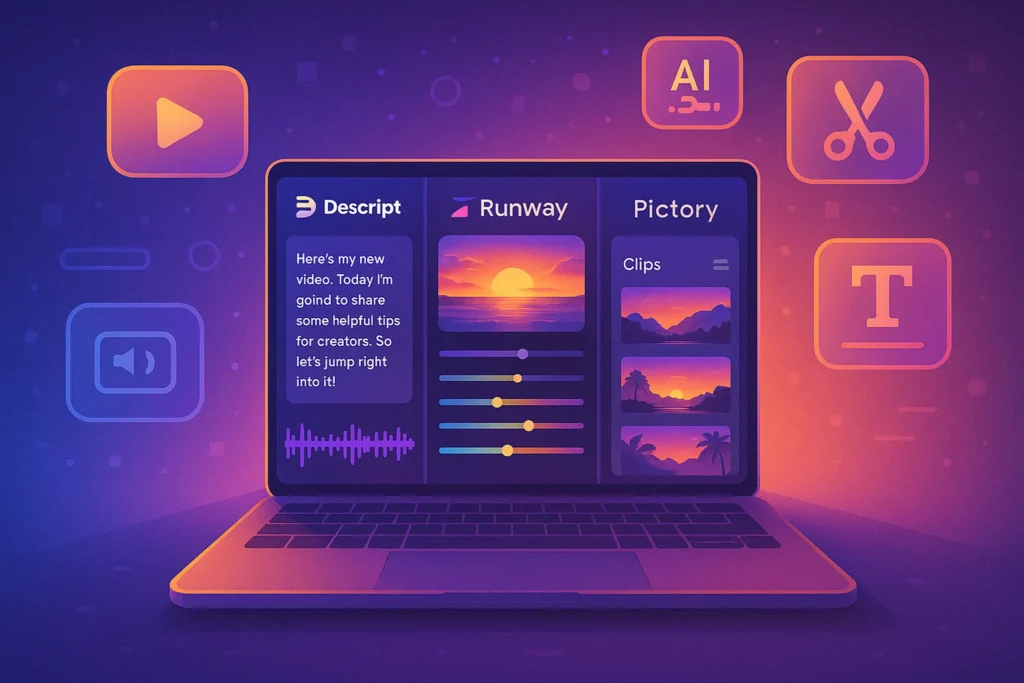🎬 Why Scripts Still Matter (A Lot)
In the fast-paced world of video content, scripting may sound like overkill—especially with short-form platforms like TikTok and Reels encouraging spontaneous vibes. But here’s the truth: the most engaging creators still script their videos. Why? Because great scripts aren’t about reading lines—they’re about engineering viewer retention.
Whether you’re producing a YouTube video, Instagram reel, or online course, a script does more than just guide your words. It shapes the story arc, ensures you hit key value points, and most importantly—keeps the viewer watching. In the YouTube algorithm world, that’s everything.
Think of your video like a mini-movie: every second matters. From the first five seconds (hook) to the last CTA, scripting allows you to inject emotional triggers, clarity, and rhythm that casual rambling can’t deliver.
🧠 Want to learn how video engagement drives rankings? Check out our guide: How to Rank Your Videos
🧱 The Anatomy of a Great Video Script
Let’s break it down. A compelling video script is like a sandwich made of attention, value, and momentum:
🔹 1. The Hook (0–5 Seconds)
You’ve got 3–5 seconds to prove your video is worth watching. That means:
-
Ask a powerful question: “Ever wonder why nobody watches your videos to the end?”
-
Show a problem instantly: [screen shows plummeting audience retention graph]
-
Say something unexpected: “I script every video like a Netflix pilot—and you should too.”
💡 Pro Tip: Start in the middle of the action, and explain later.
🔹 2. Preview the Value (5–15 Seconds)
Let the viewer know why they should care and what they’ll get. Keep it punchy:
“By the end of this video, you’ll know exactly how to script your content like a pro—even if you’re not a writer.”
Use direct promises and emotional tension.
🔹 3. Body: Value-First Storytelling
Instead of just dumping tips, structure your body like a mini-narrative:
-
Start with a relatable problem
-
Show a failed approach (pattern interrupt)
-
Deliver your actionable solution
-
Close with a real example or metaphor
🎯 This narrative loop keeps energy high and curiosity alive.
🔹 4. CTA + Outro
Don’t wait until the last second to push action. Instead:
-
Soft CTA mid-video (subscribe, comment, download)
-
Hard CTA at the end (click link, watch next video, sign up)
🧩 Nerd Tip: Use “open loops” (we’ll explain that next 👇) to boost follow-through.
🎥 Want to Write Scripts That Keep Viewers Watching?
Join our newsletter and get weekly deep-dives into script formulas, retention tactics, and tools for video creators—designed to help your content perform better and convert more.
🔐 No spam. Just proven tactics for creators, educators, and storytellers who want to level up.
🧠 Writing Techniques to Maximize Engagement
Scripting isn’t just about what you say—it’s about how you say it. These techniques are rooted in psychology and storytelling, and they’re used by top creators to keep viewers hooked from start to finish:
🔄 1. Open Loops & Curiosity Gaps
Open Loops are questions or ideas you start, but don’t immediately finish. They create tension and motivate the brain to stay tuned until resolution.
Example:
“In just a minute, I’ll show you the exact script I used to grow my channel by 300%. But first…”
Why it works: Your brain hates unfinished stories. Use this as a pacing mechanism.
📌 Nerd Tip: Layer multiple open loops early in your script and resolve them in reverse order.
🚫 2. Pattern Interrupts
Most viewers consume video content in autopilot. A pattern interrupt breaks that rhythm. It could be:
-
A sudden sound
-
A cutaway visual
-
A surprising question
-
A switch in pacing or tone
Example:
“Wait. Did you notice what just happened? That’s called a visual reset—and here’s why it matters.”
Use pattern interrupts every 30–60 seconds to reset attention and maintain engagement.
🗣️ 3. Personal & Conversational Tone
Instead of writing like a script, write like you’re speaking to one person—your ideal viewer. Use:
-
“You” and “your” often
-
First-person storytelling: “I struggled with this too…”
-
Colloquial phrases: “Here’s the deal…”
Avoid robotic, overly polished lines. Natural = trustworthy.
❓ 4. Asking Questions
Engagement = interaction.
Even if your video is pre-recorded, asking direct questions like:
“Have you ever felt stuck staring at a blank screen?”
triggers an internal response from the viewer—and often drives external actions (like comments or watch-time increase).
Use rhetorical, reflective, or leading questions to keep viewers mentally involved.
🔁 5. Analogies and Visual Anchors
Help abstract ideas stick by anchoring them to something tangible:
“Think of your script like Google Maps—it tells your viewer exactly where they’re going next.”
The brain remembers images and stories 10x more than plain facts.
🧠 Want more tips on structured thinking for creators? Try: How to Brainstorm Blog Ideas Like a Pro
📄 Free Video Script Template
Want to write binge-worthy videos that hold attention and boost watch time?
Get our 4-Part Script Template PDF with step-by-step writing prompts—free.
- ✔ Fill-in-the-blank script structure
- ✔ Psychology-based prompts
- ✔ Instant download after signup
🔐 100% privacy. No spam—just high-value video strategy content from NerdChips.
📋 Script vs Outline vs Teleprompter: Which Should You Use?
There’s no one-size-fits-all. Here’s a quick comparison based on context:
| Method | Pros | Cons | Best for |
|---|---|---|---|
| Full Script | Total control, polished delivery | Can sound stiff if read poorly | Explainers, Reviews, Tutorials |
| Outline Only | Flexible, natural tone | Risk of rambling or forgetting key info | Personal stories, casual videos |
| Teleprompter | Clean, pro-level delivery | Requires practice to sound natural | News-style content, courses |
🎯 Tip: Combine approaches. Script the hook & CTA, outline the body. Or script your intro, then freestyle the core.
⚙️ Tools to Help You Script Smarter (and Faster)
Whether you’re solo or part of a content team, the right tools can 2x your workflow:
✨ 1. AI Writing Assistants
Use tools like Jasper, ChatGPT, or [Copy.ai] to:
-
Generate script drafts
-
Rewrite awkward lines
-
Brainstorm hooks or transitions
💡 Already using AI tools? Don’t miss our guide on Best AI Writing Assistants for YouTube Scripts
🧱 2. Notion (Script Templates + Content Vault)
Build a database of reusable script blocks:
-
Intros
-
CTAs
-
Story templates
-
Research notes
Add tags for video type, duration, tone, etc.
📌 Nerd Tip: Create a “Hook Vault” inside Notion with battle-tested opening lines.
🎙️ 3. Descript (Script-to-Edit Integration)
Descript isn’t just for editing—its video script editor lets you:
-
Write your script
-
Record directly from it
-
Edit via transcript (like a doc)
Perfect for tutorials, narrated explainers, and podcast-style content.
🎥 Learn how this works in our post: How to Edit Videos Like a Pro
🎛️ Best Practices by Video Type
Different content styles need different scripting strategies. Here’s a cheat sheet:
| Video Type | Scripting Focus |
|---|---|
| Educational | Structure, clarity, logical flow |
| Explainer | Visual language, analogies, clear benefits |
| Product Review | Honesty, pros/cons, timestamped breakdown |
| Story-based | Emotional arc, conflict-resolution format |
| Live Stream | Loose outline, audience hooks, modular CTAs |
Want to learn how to structure your entire YouTube journey? Start with How to Start a YouTube Channel in 2025
🎥 Real Script Breakdown: A Viral Video in Action
Let’s analyze a real-world example of a 5-minute educational YouTube video with over 1M views. Here’s how its script is crafted for maximum engagement:
| Section | Time Stamp | What Happens | Why It Works |
|---|---|---|---|
| Hook | 0:00–0:06 | “Most people waste 90% of their video intros. Here’s how to fix that.” | Strong pattern interrupt + promise to solve a known pain |
| Teaser | 0:06–0:15 | “By the end, you’ll have a 4-part video script you can reuse forever.” | Creates retention through a clear benefit |
| Body 1 | 0:16–1:30 | Introduces pain (long boring intros), then contrast with tight storytelling | Problem–Solution flow, keeps viewer emotionally engaged |
| Body 2 | 1:31–4:00 | Shows real template + on-screen overlays and pacing rhythm | Combines education with visual anchors |
| CTA + Outro | 4:01–5:00 | “Grab the script file below + subscribe for more content templates.” | Multi-step CTA with lead magnet + next action |
🎯 Takeaway: Every line in this script earns its place—no filler. It layers hooks, visuals, and curiosity in a fast-paced rhythm.
🧭 Which Script Style Should You Use? (Quick Selector)
Not all scripts are created equal. Use this Script Selector Flow to choose the right format for your next video:
-
Are you recording a tutorial or explainer?
→ ✅ Use a Full Script. Clarity matters more than spontaneity. -
Telling a personal story or vlog?
→ ✍️ Go with an Outline. Use bullets + voice notes to stay authentic. -
Going Live or unscripted?
→ 🧩 Write a Modular Doc. Use short “talking point” blocks for flexibility. -
Presenting a product or sales pitch?
→ 💬 Script key transitions + CTAs. Avoid rambling and tighten delivery.
📌 You can mix formats too: script the hook & CTA, but outline the body.
✅ Final Script Performance Checklist
Before you hit “Record,” run your script through this list:
📋 Video Script Final Checklist
- ✅ Hook delivered in first 5 seconds
- ✅ Clear promise or teaser early on
- ✅ One or more open loops introduced
- ✅ Conversational tone with personal pronouns
- ✅ 1–2 questions to spark reflection or engagement
- ✅ Pattern interrupt (sound, visual, surprise) every 30–60 seconds
- ✅ Mid-video soft CTA + final strong CTA
- ✅ Ending with resolution or transition to next content
Tip: Print this checklist or turn it into a reusable block in Notion.
🧠 Nerd Verdict
Your script is more than just words—it’s the architecture of retention. A well-written script doesn’t just deliver information; it carries the emotion, rhythm, and psychology that makes content binge-worthy.
You don’t need to be a professional screenwriter to create high-performing scripts. You just need a system:
-
Hook the brain
-
Respect the pacing
-
Resolve curiosity
-
Drive action
Master this, and you’ll not only get longer watch times—you’ll build real trust and loyalty with your audience.
❓ FAQ: Nerds Ask, We Answer
🔍 Would You Bite?
🎯 What’s your biggest struggle with writing video scripts?
Staring at the blank page?
Keeping things natural?
Structuring for retention?
Drop your biggest script challenge in the comments—and we’ll help you solve it in our next post. 👇



